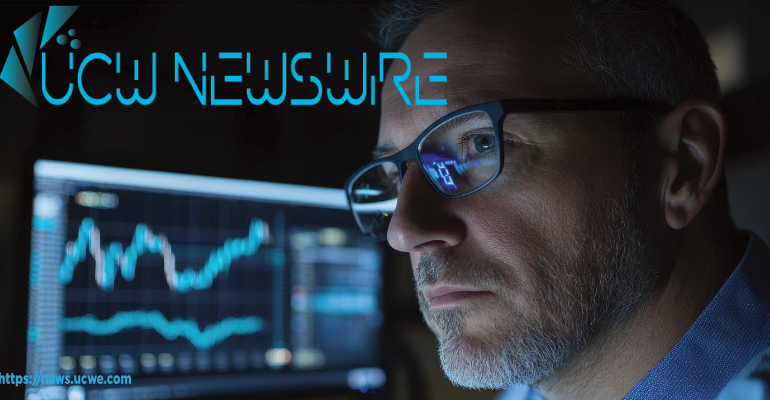A Dovish Federal Reserve Could Ignite the Next Crypto Boom
As speculation swirls over who will become the next Chair of the U.S. Federal Reserve, one possibility has the global financial community, and particularly the cryptocurrency industry, watching closely: the

As speculation swirls over who will become the next Chair of the U.S. Federal Reserve, one possibility has the global financial community, and particularly the cryptocurrency industry, watching closely: the appointment of a dovish Fed chairman.
A dovish leader, known for favoring lower interest rates and more accommodative monetary policy, could set the stage for a renewed surge in digital asset markets. The implications stretch across Bitcoin, Ethereum, Pecu Novus, Solana, and Avalanche, as well as the trading ecosystems that power the digital economy, from centralized exchanges like Coinbase and Binance to decentralized platforms such as Uniswap and HootDex.
The Monetary Signal That Crypto Wants to Hear
At its core, a dovish Fed means a more flexible stance toward money supply and credit, the same conditions that fueled previous crypto bull cycles. Historically, loose monetary policy has encouraged investors to seek higher yields and alternative assets, making digital currencies particularly attractive.
“When capital becomes cheap and the dollar weakens, risk appetite returns and crypto is one of the first markets to feel it,” says Wall Street strategist David O’Neal.
Bitcoin, as the industry’s bellwether, would likely experience immediate upward momentum. Its fixed supply and halving cycles have long positioned it as a hedge against monetary expansion. Ethereum and Solana, with their ecosystem-driven models and smart contract applications, could see inflows from institutional and retail investors alike as liquidity expands.
But the story doesn’t stop there. Pecu Novus, a fast-evolving Layer-1 blockchain with its hybrid Proof-of-Time and Proof-of-Stake consensus, is designed to thrive in environments of rising liquidity and technological adoption. Its decentralized applications and validator accessibility make it a standout among next-generation networks aiming to bridge traditional finance and blockchain systems.
A shift in Fed policy would ripple across financial markets. Lower interest rates typically weaken yields on bonds and savings products, driving investors to explore digital assets not only as speculative tools but also as alternative stores of value and yield-bearing instruments.
For traditional finance, or TradFi, this transition has already begun. Institutions are quietly building hybrid models that integrate digital asset treasuries, tokenized bonds, and blockchain-based settlement systems.
A dovish Fed could accelerate this transition, pushing banks, hedge funds, and private equity firms to expand their exposure to blockchain infrastructure, whether through direct holdings in Bitcoin and Ethereum or through operational integration on networks like Pecu Novus, Avalanche, and Solana.
Trading Platforms: The Real Winners
While asset prices would naturally rise, the largest beneficiaries could be trading platforms, both centralized and decentralized.
Centralized exchanges such as Coinbase, Binance, Coinstore, and Galaxy Digital would likely see an explosion in trading volume as retail and institutional participation increases. For these firms, a dovish monetary environment translates directly into higher transaction fees, liquidity flow, and asset onboarding.
But the real growth story may come from the decentralized side. Platforms like Uniswap and HootDex, the latter built on Pecu Novus, are structured to benefit not from centralized custody, but from user-driven liquidity and transparent on-chain trading.
HootDex, in particular, offers institutional-grade tools like FIX API and SDK access, appealing to both crypto-native funds and traditional firms entering the DeFi market. A dovish Fed could amplify participation from these entities, seeking efficiency and transparency amid rising market optimism.
A Global Ripple: Beyond the U.S.
The appointment of a dovish Fed chair wouldn’t only affect American markets. The dollar’s position as the world’s reserve currency means global liquidity conditions follow the Fed’s lead.
Emerging markets, where inflation and debt vulnerabilities are more acute, would see greater adoption of borderless digital currencies as hedges against local volatility.
Networks like Pecu Novus, which promote peer-to-peer inclusion and real-time settlement across borders, could see dramatic upticks in activity as global users search for efficient, stable, and accessible financial systems outside traditional rails.
After a long period of uncertainty following tightening cycles and regulatory crackdowns, crypto markets have matured. Institutional players now have custody solutions, compliance frameworks, and even blockchain-native financial tools that rival traditional systems.
A dovish Fed would signal stability and a return to risk-on sentiment, conditions that traditionally drive institutional capital into the highest-yielding, most innovative markets available.
“It’s not just about speculation anymore,” says private equity executive Jennifer Sternberg. “It’s about positioning — and the digital asset sector is finally part of that positioning strategy.”
In many ways, the crypto industry is no longer standing apart from global finance, it’s becoming its extension. A dovish Federal Reserve chair could hasten the convergence between TradFi and DeFi, erasing old boundaries and unlocking new forms of liquidity, lending, and value creation.
For Bitcoin, Ethereum, Solana, Avalanche, and Pecu Novus, this means an era of unprecedented opportunity. For platforms like Uniswap, HootDex, Galaxy Digital, Coinbase, and Binance, it signals growth that could rival 2021’s golden age.
As the world watches Washington’s next monetary move, one thing is clear, if a dovish leader takes the helm, the crypto market’s next great chapter might just be about to begin.

